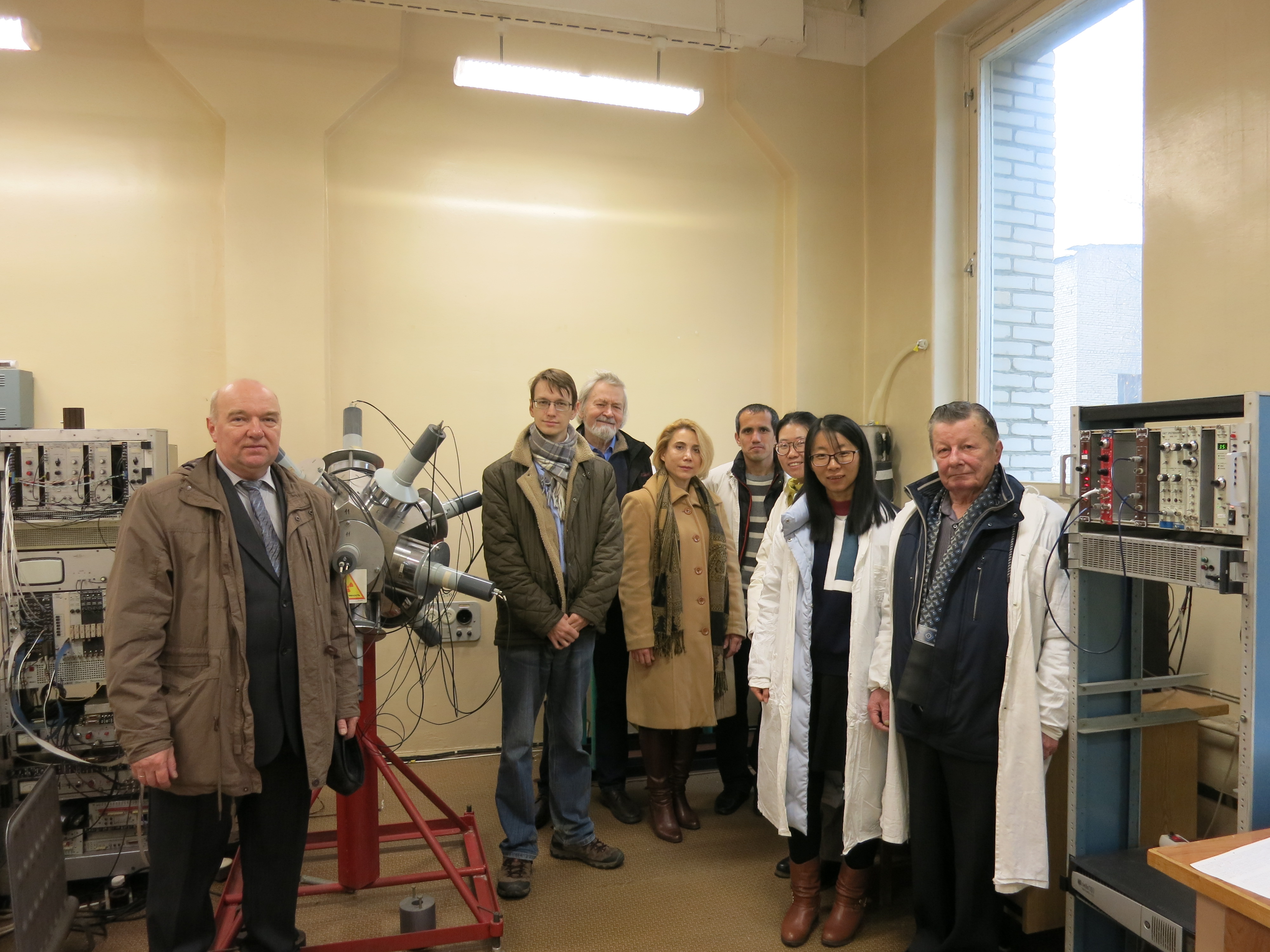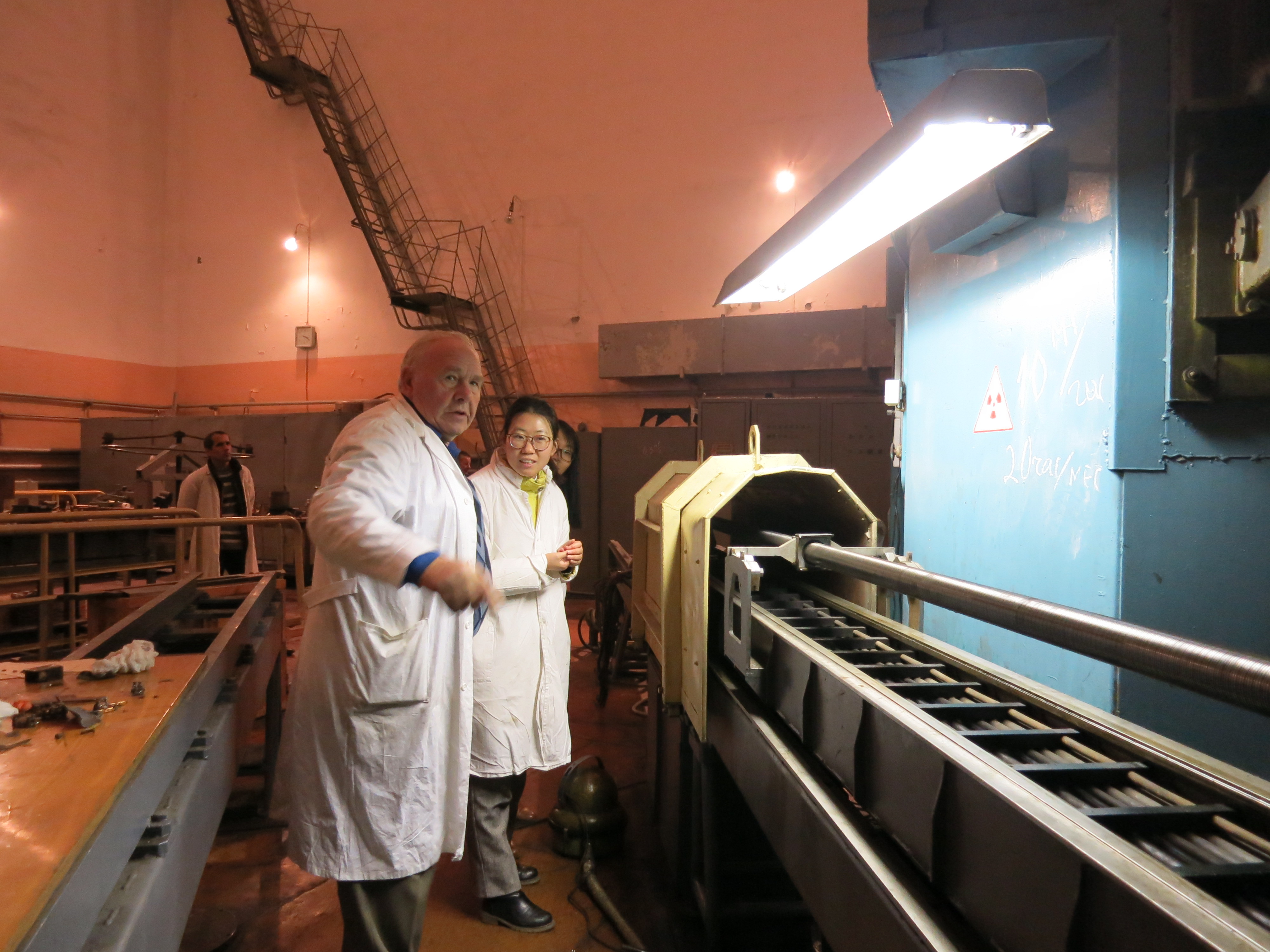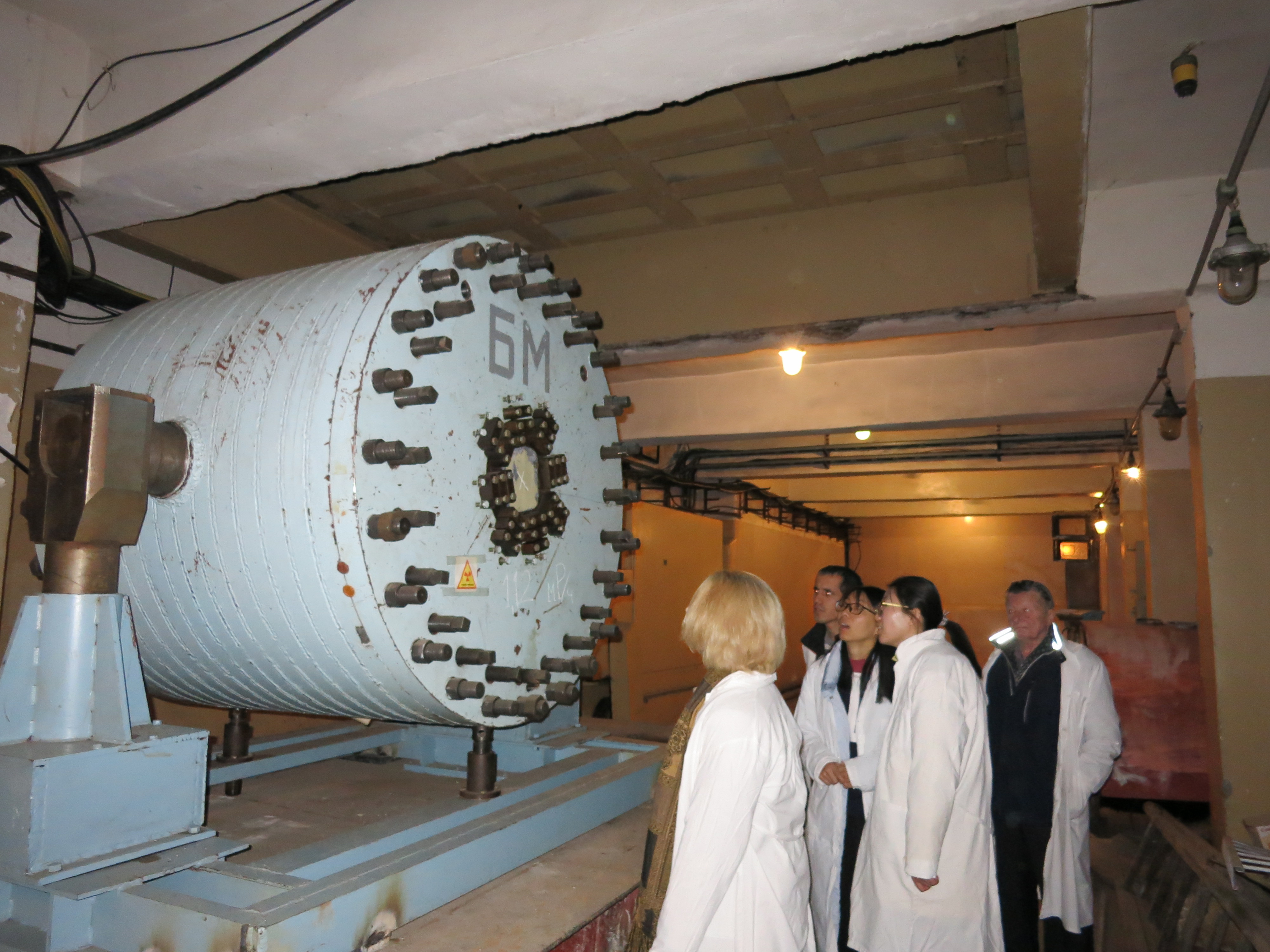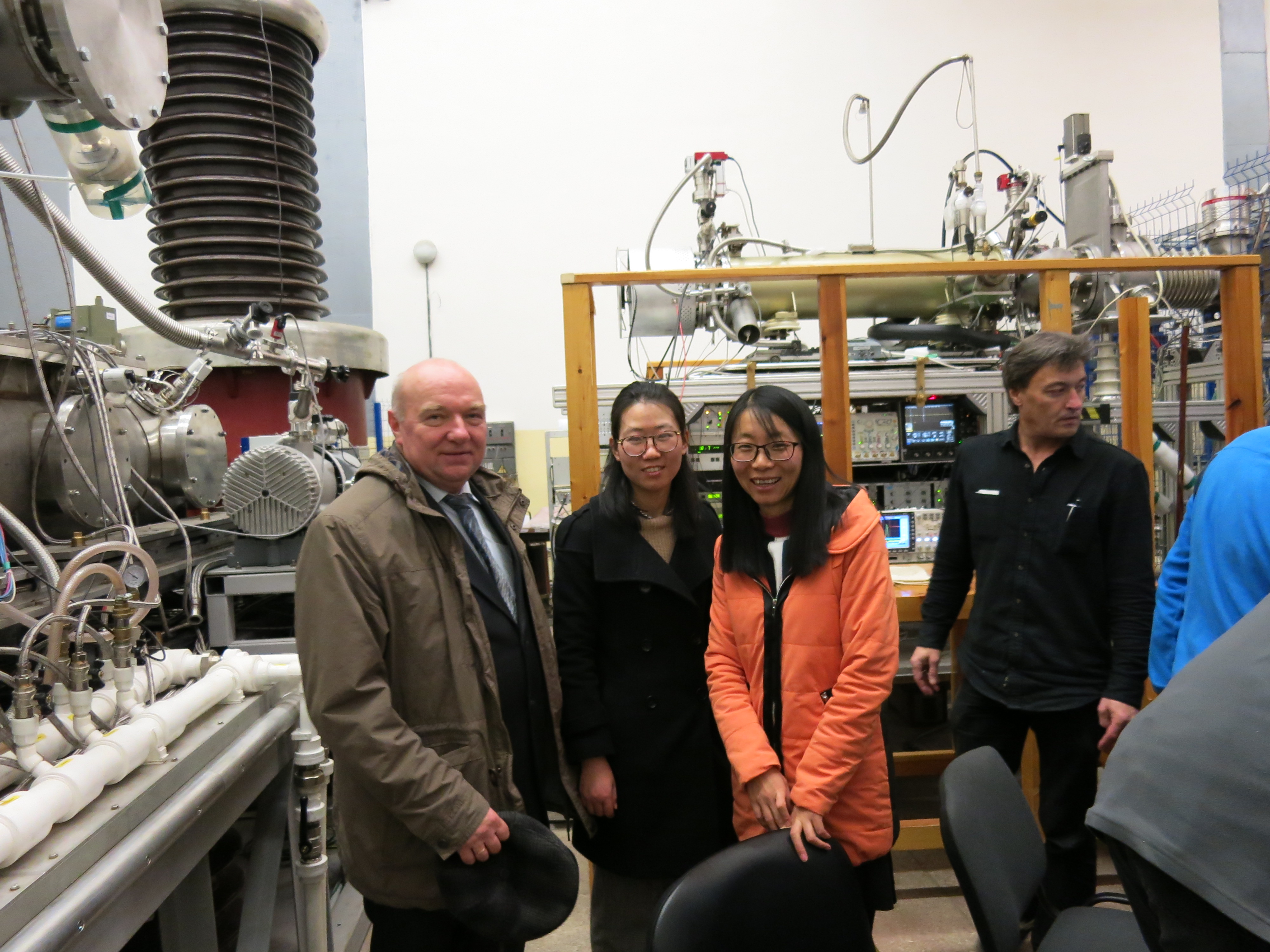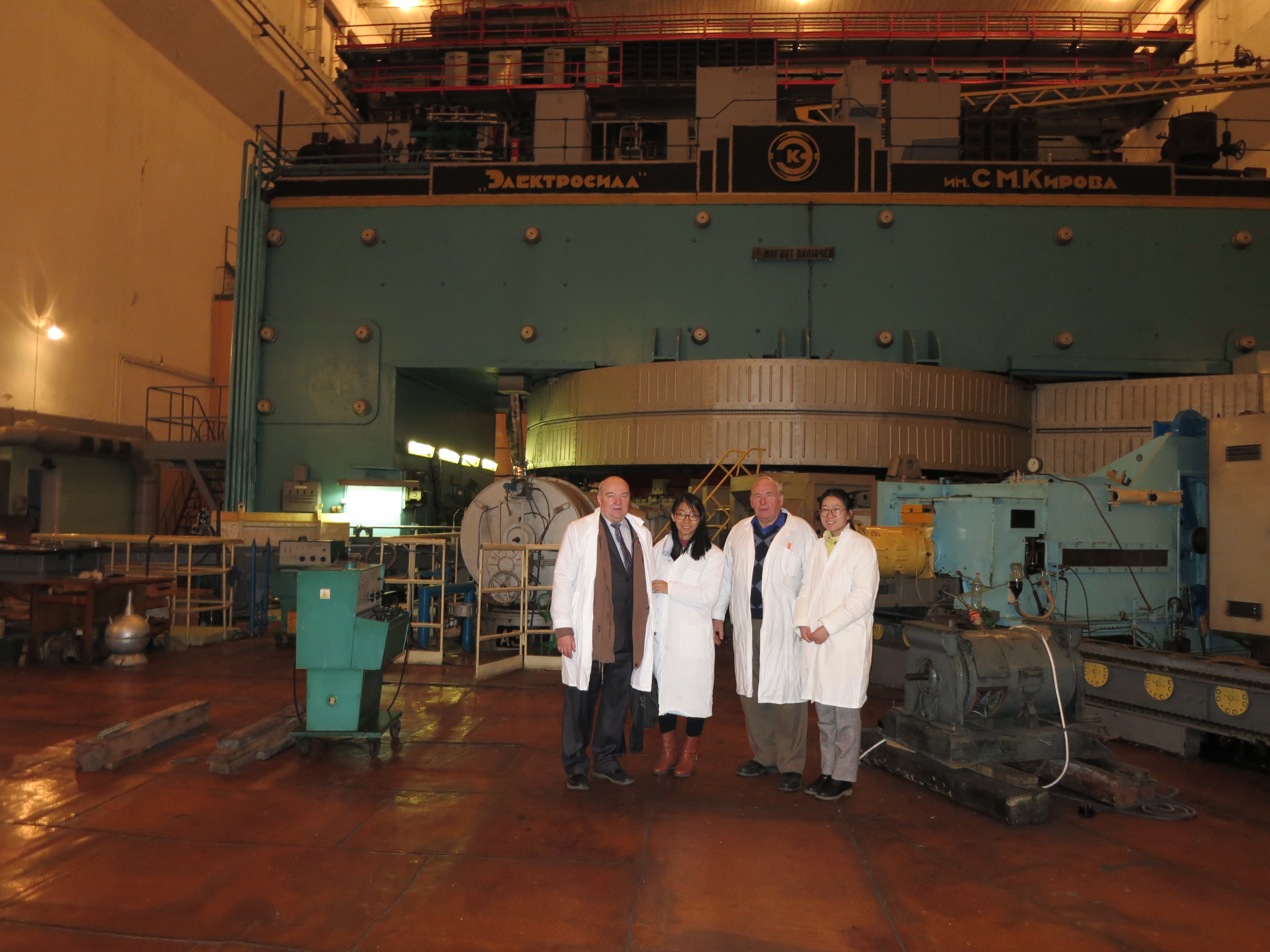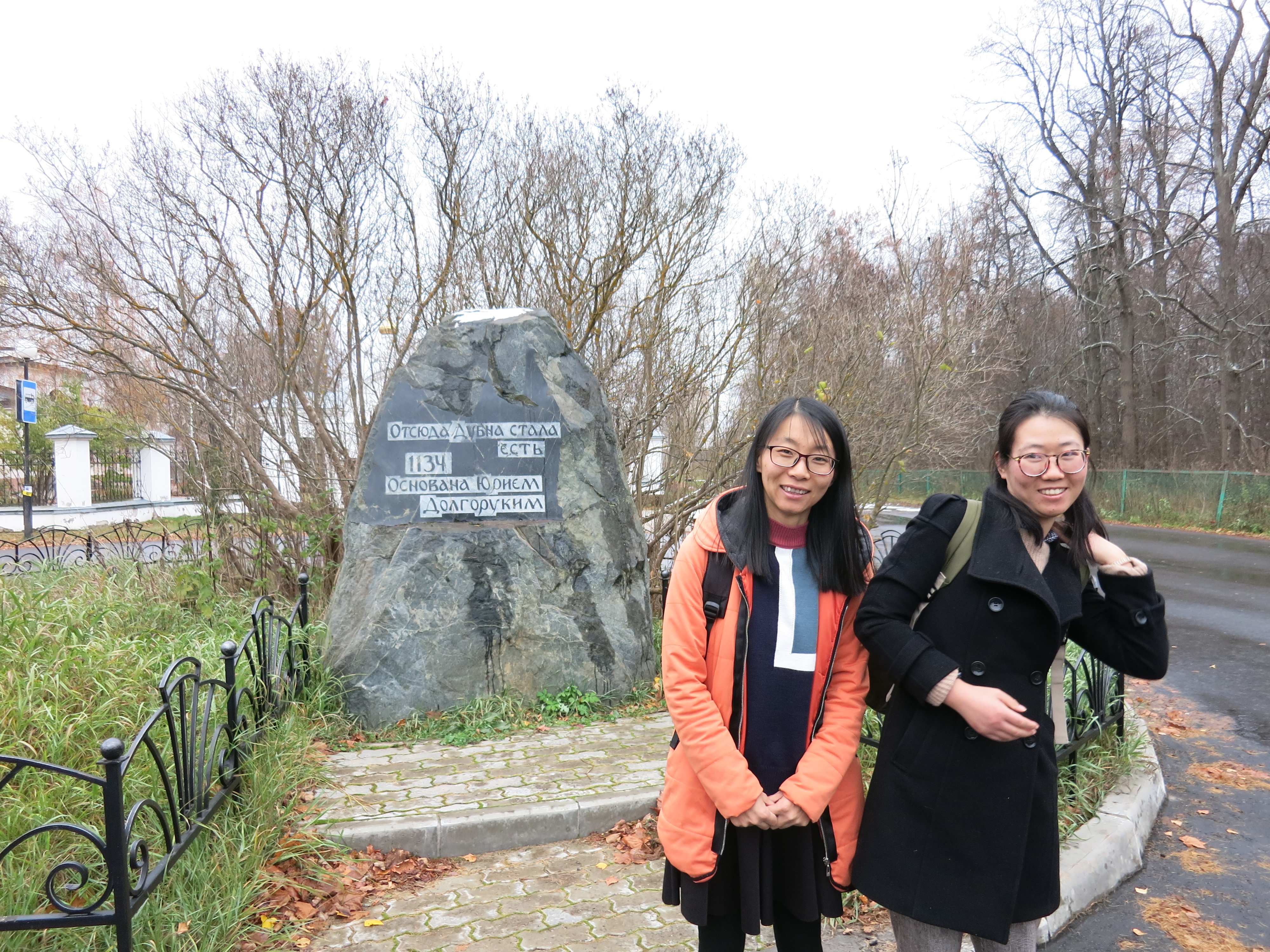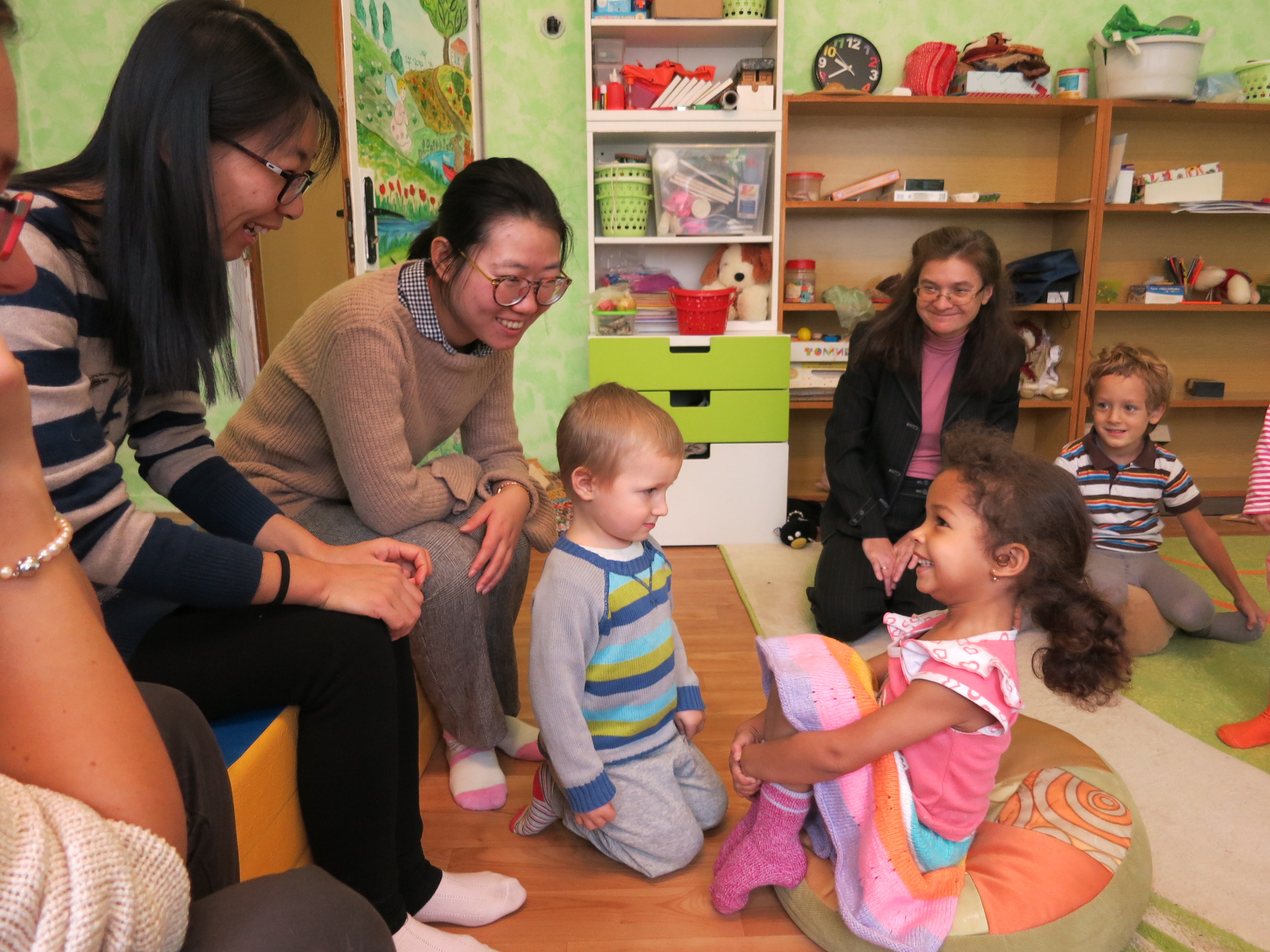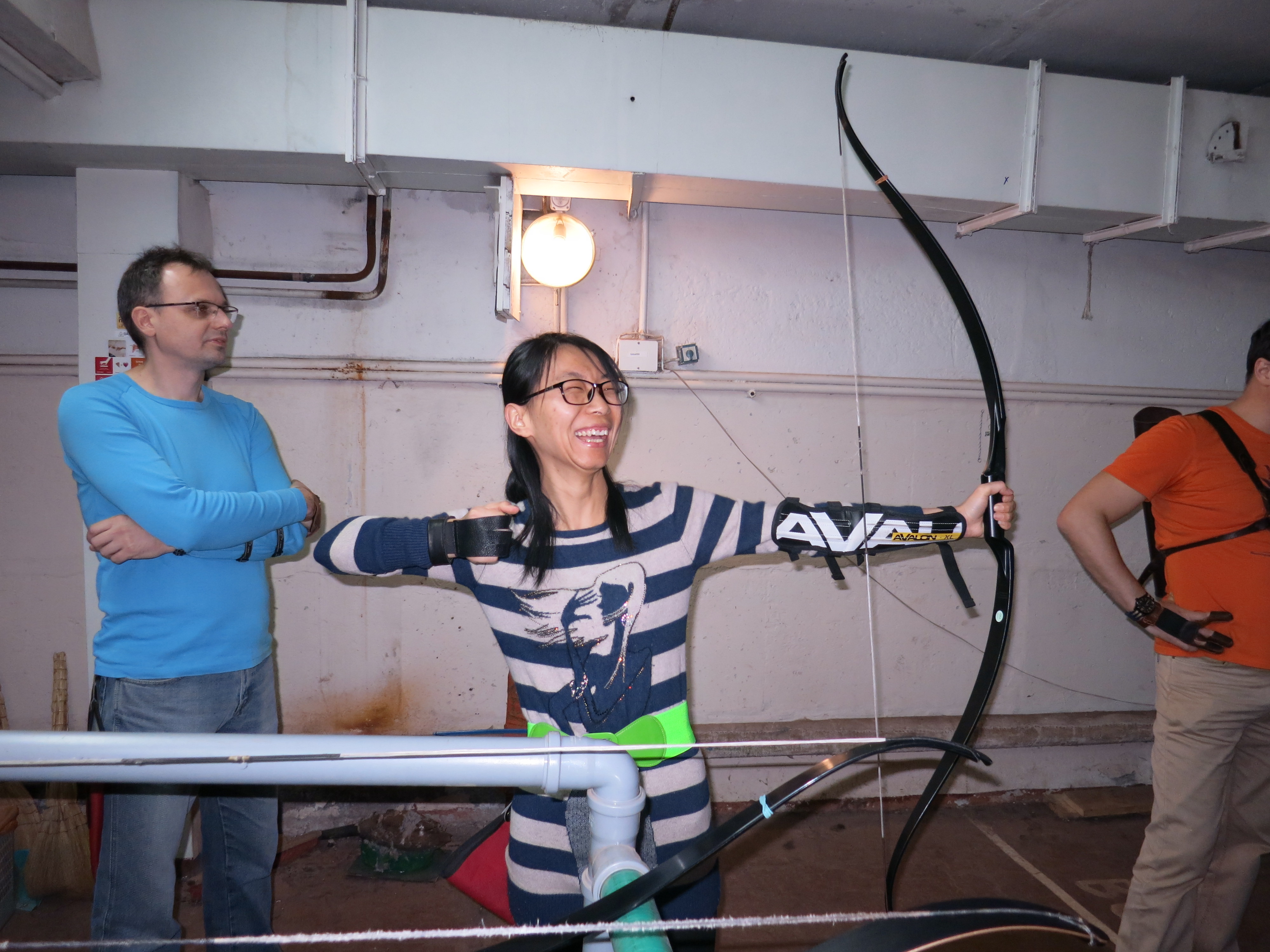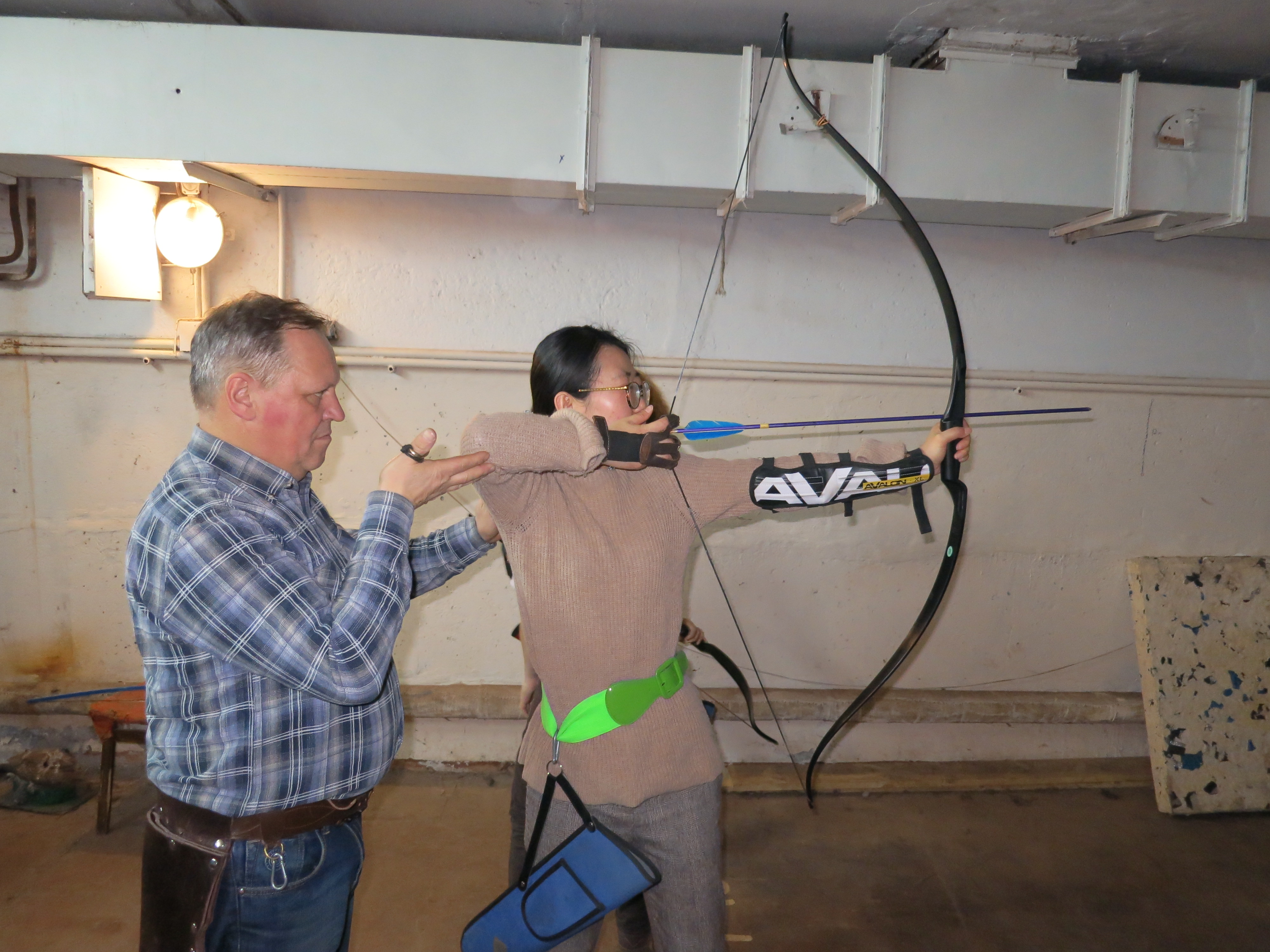A visit of Chinese colleagues
News, 16 November 2017
In JINR active research on deep subthreshold Accelerator Driven Systems (ADS) for energy production, transmutations of radioactive wastes and radioactive material science is under way in frames of the theme “Development and creation of prototype for radiotherapy and applied research using Heavy-Ion beams at the Nuclotron – M” (Headed by S.I. Tyutyunnikov).
Recently the unique big uranium target BURAN was moved from the Laboratory of High Energy Physics to the Laboratory of Nuclear Problems for further successful experiments with the “Quinta” target. The world community is greatly interested in our research, especially in new the concept of using light nucleus instead of protons in ADS. In collaboration “Energy plus transmutation” scientists and engineers work. They are from JINR Member States – Russia, Armenia, Belarus, Bulgaria, Moldova, Mongolia, Poland, Romania, Slovakia, Ukraine, the Czeck Republic, and from Austria.
In 2017 the Agreement between JINR and the Institute for Contemporary Physics of CAS (Lanzhou) on collaborative research of deep subtreshold systems and their possible application was finalized. ICP delegation visited JINR on 26 – 31 October. The programme of the visit was interesting and intense for both Russian and Chinese parties. In ICP the high-precision proton accelerator, with intensities sufficient for real nuclear-power facilities, was constructed and brought into service in a short time. Chinese scientists provided reports on experimental and theoretical research in this field in ICP (Lanzhou).
Chinese colleagues were deeply impressed by the visit to the plant that produces magnetic elements for the NICA collider that is under construction in JINR, and by the visit to the FAIR facility (GSI, Darmstadt) in building 217 of VBLHEP as well. A.R.Galimov and A.A.Tikhomirov spoke on technical peculiarities of superconducting magnetic elements of the “Dubna” system.
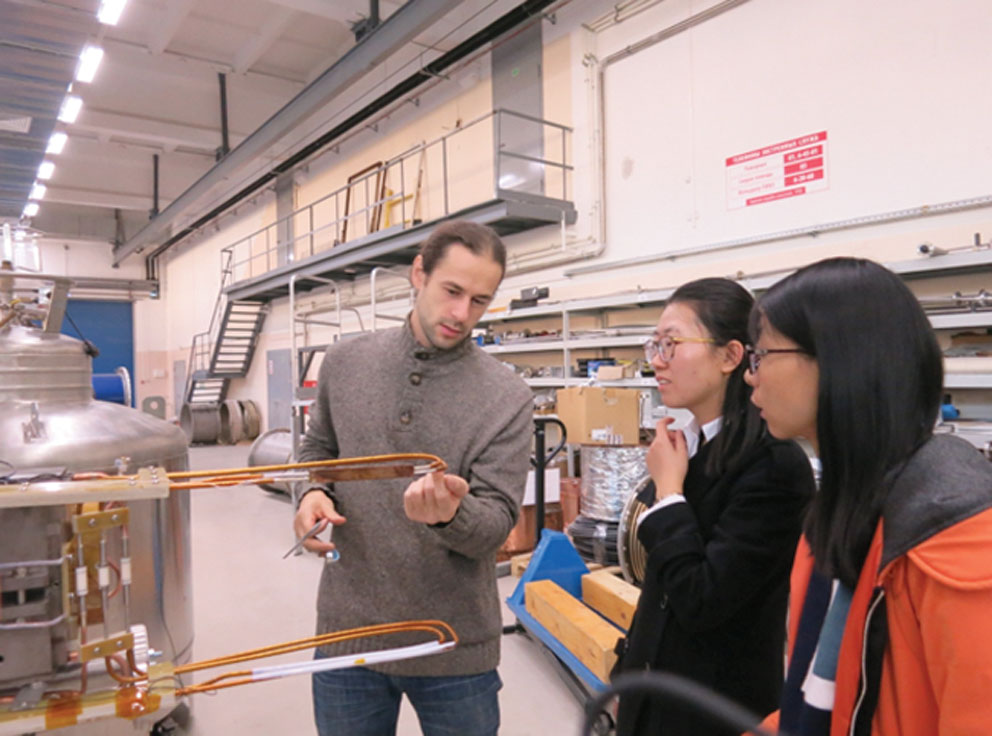 A.A.Tikhomirov, Li Yan and Ya Li in bld.217 VBLHEP, JINR
A.A.Tikhomirov, Li Yan and Ya Li in bld.217 VBLHEP, JINR
Chinese researchers visited the accelerator complex of VBLHEP. Beams’ parameters available at Nuclotron – 3 were of special interest for Chinese delegation. Thus, one of the most promising proposals for further cooperation in which the Chinese party is interested was irradiation of targets made of various materials, including tungsten and beryllium, at heavy and medium weight ions at the VBLHEP Accelerator complex. Chinese scientists were also interested in experiments on the internal target and dynamic diagnostics systems of the circulating and ejected Nuclotron beams.
One day of the visit was devoted to the acquaintance with a legendary accelerator – the Phasotron facility activated in 1949 – that is going to be used for new experiments with the quasi infinite uranium target BURAN in the immediate future. A.A.Solnyshkin, responsible for these experiments in DLNP, and N.G.Shakun, Head of the Accelerator, talked about current work, plans and prospects.
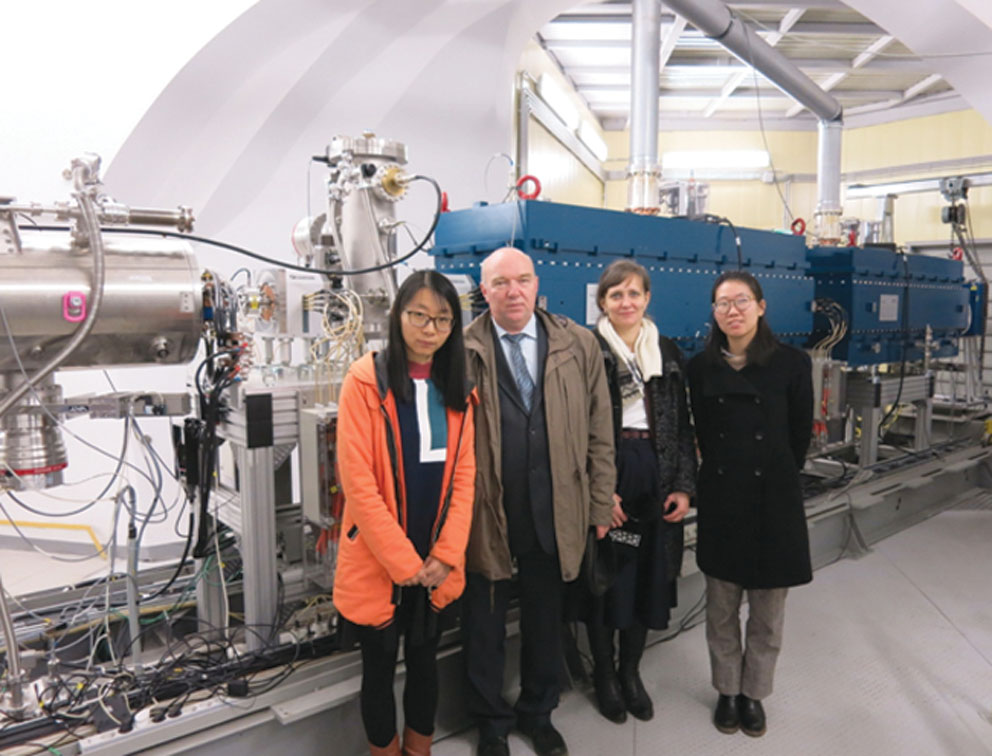 Ya Li, A.A.Baldin, E.A.Levterova, Li Yan next to the new linear heavy ions accelerator, VBLHEP, JINR
Ya Li, A.A.Baldin, E.A.Levterova, Li Yan next to the new linear heavy ions accelerator, VBLHEP, JINR
S.Tyutyunnikov demonstrated to Chinese colleagues collaboration’s spectrometric laboratories in which measurements are conducted by means of the activation method, one of the basic methods used for radioactive material science and study of neutron fields.
Lively discussions of mathematical modelling of heat transfer processes in big and unstable targets resulted in signing new agreements on further collaborative comparative calculations of the massive uranium target. These data are of great importance for verification of computer codes and validation of physical constants systems used in calculations.
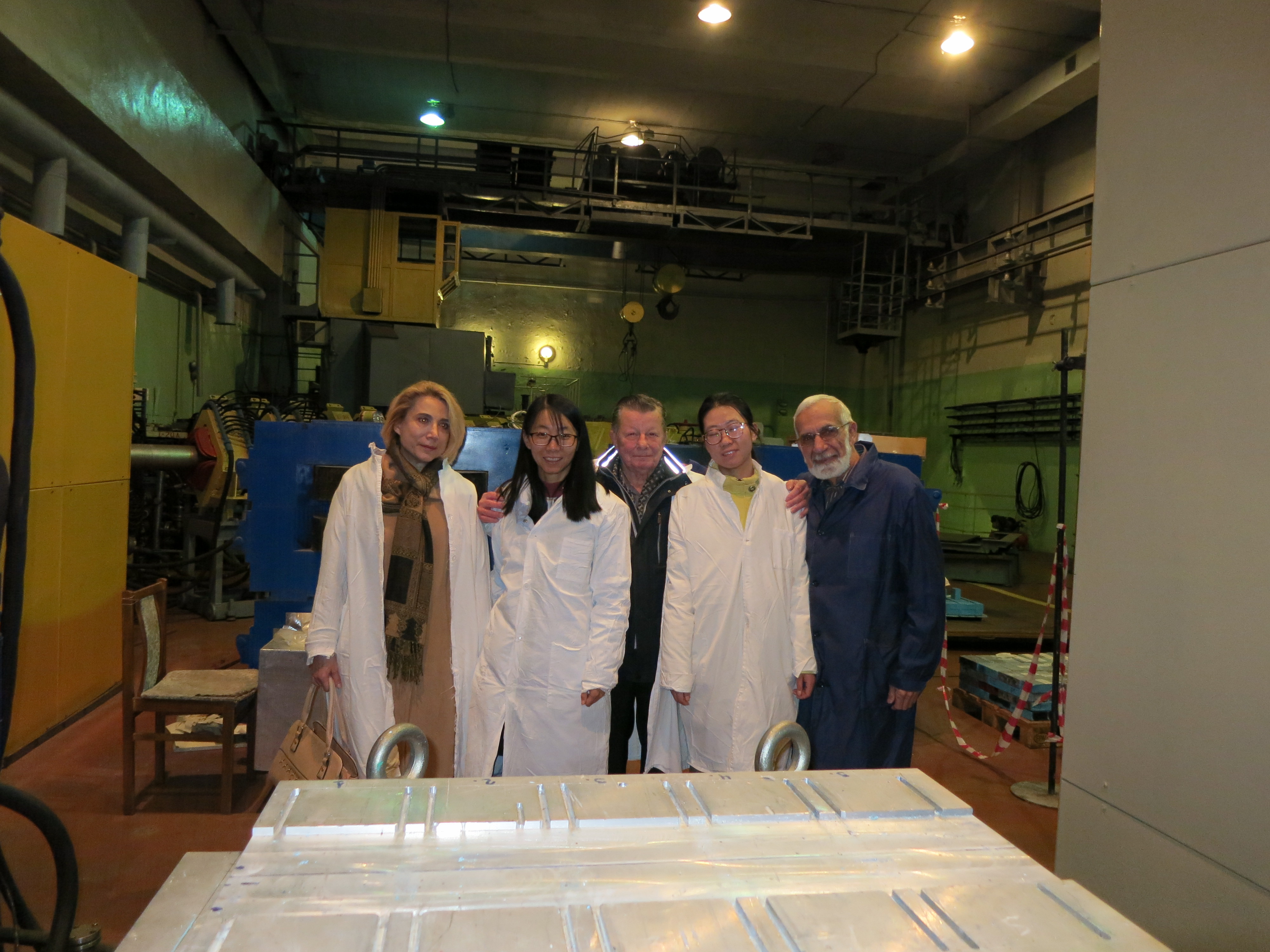 M.Paraypan, Ya Li, A.A.Solnyshkin, Li Yan, V.I.Furman in the experimental area where the big uranium target will be placed
M.Paraypan, Ya Li, A.A.Solnyshkin, Li Yan, V.I.Furman in the experimental area where the big uranium target will be placed
The Chinese colleagues who were in Russia for the first time were greatly interested in cultural life of our country. They visited the Tretyakov Gallery and Red Square in Moscow. Guests got favourable impressions of Dubna, our native town appealed to Chinese guests. Even rainy weather was not an obstacle for good communication. Thus, Chinese guests visited the “Alpha and Omega” children club in JINR Public Library. No doubt that the Library became true cultural centre of Dubna thanks to I.E.Leonovich, her colleagues, library personnel, volunteers and activists. Excellent conditions for communication are created here for adults and children, scientists, musicians, all non-indifferent and inquisitive people.
Chinese guests, in their turn, told about their country, cultural traditions and bringing up of children. Russian children interestedly asked the guests about toys Chinese children play with, places to learn kung fu, etc. Both parties admired to speak English.
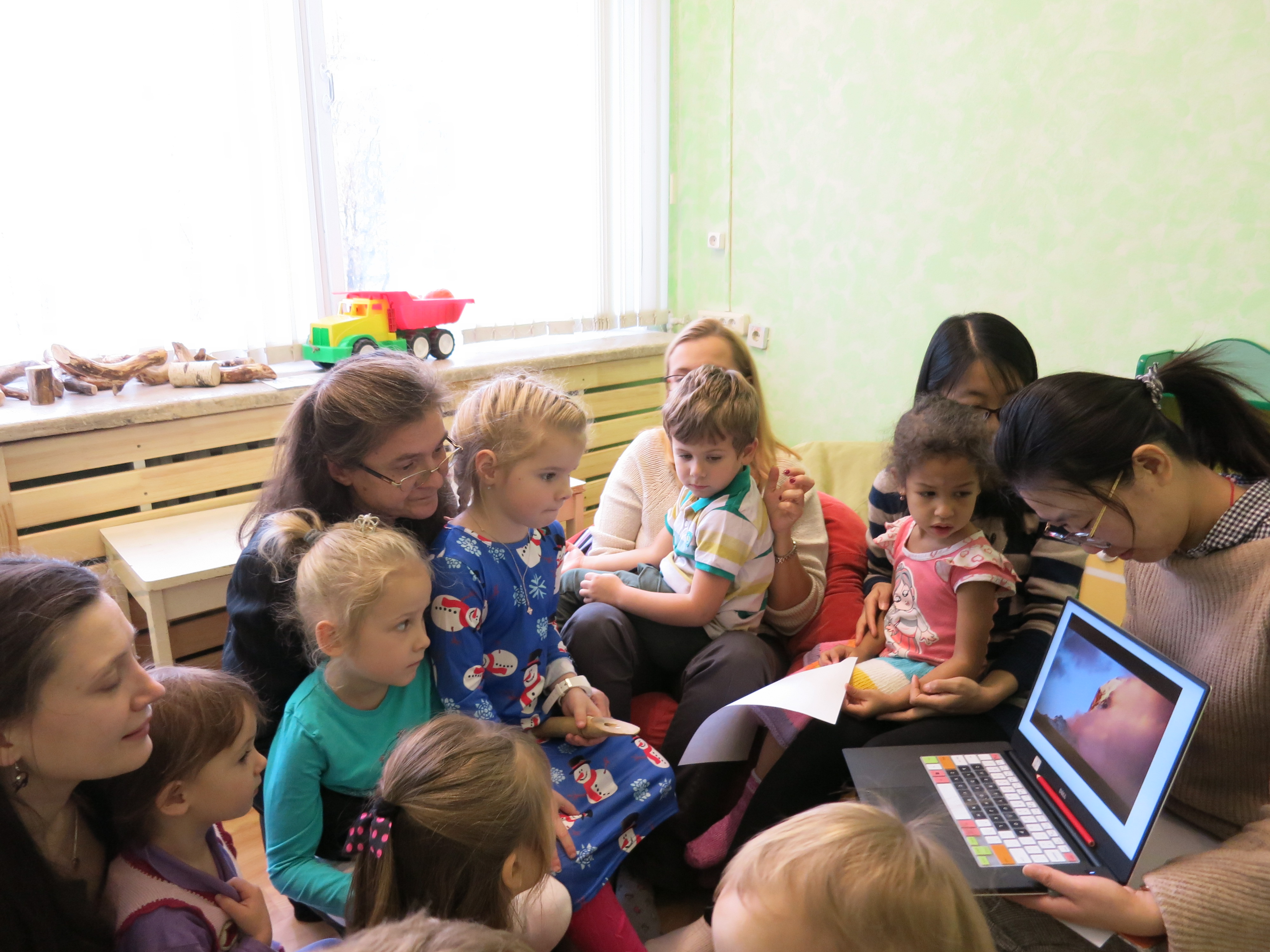 In JINR Library
In JINR Library
One more compelling event of cultural programme in Dubna was a visit organized by A.A.Scherbakov to the archers’ club in the JINR Stadium.
We are hoping that cooperation started by these meetings will result in new experimental results, especially in the field of applied nuclear research.
By Anton Baldin, VBLHEP Senior researcher, Doctor of Physical and Mathematical Sciences
